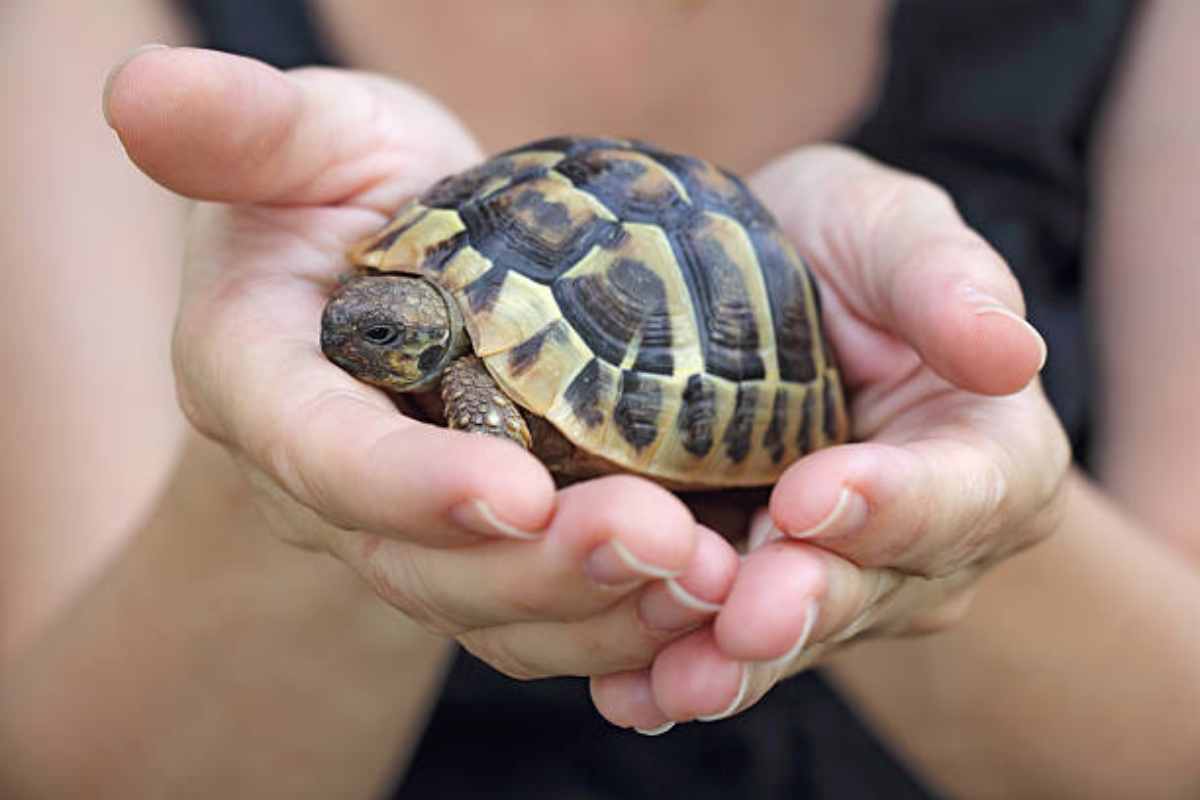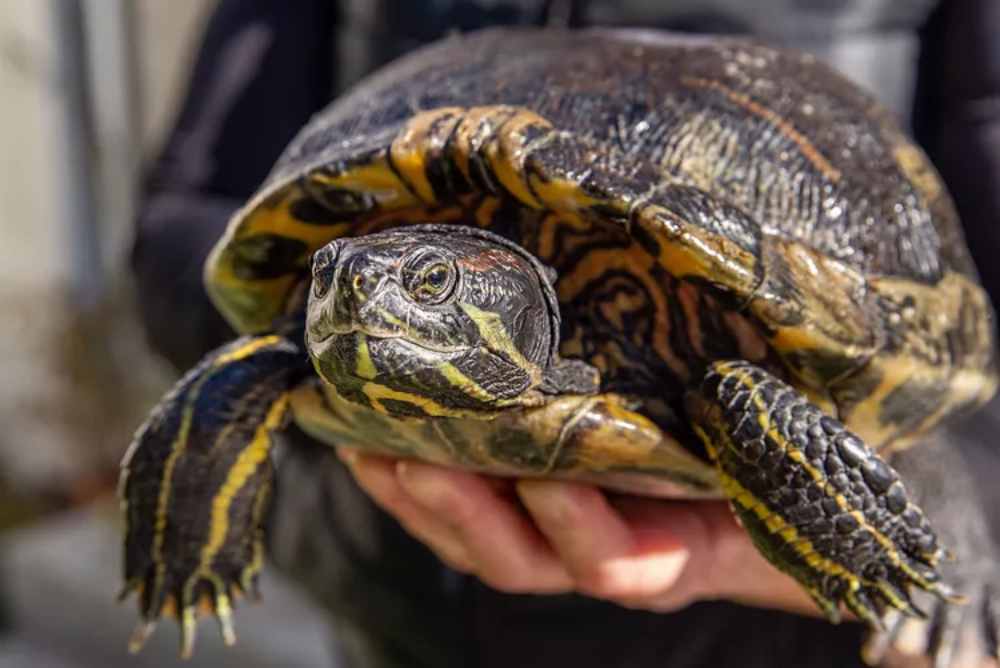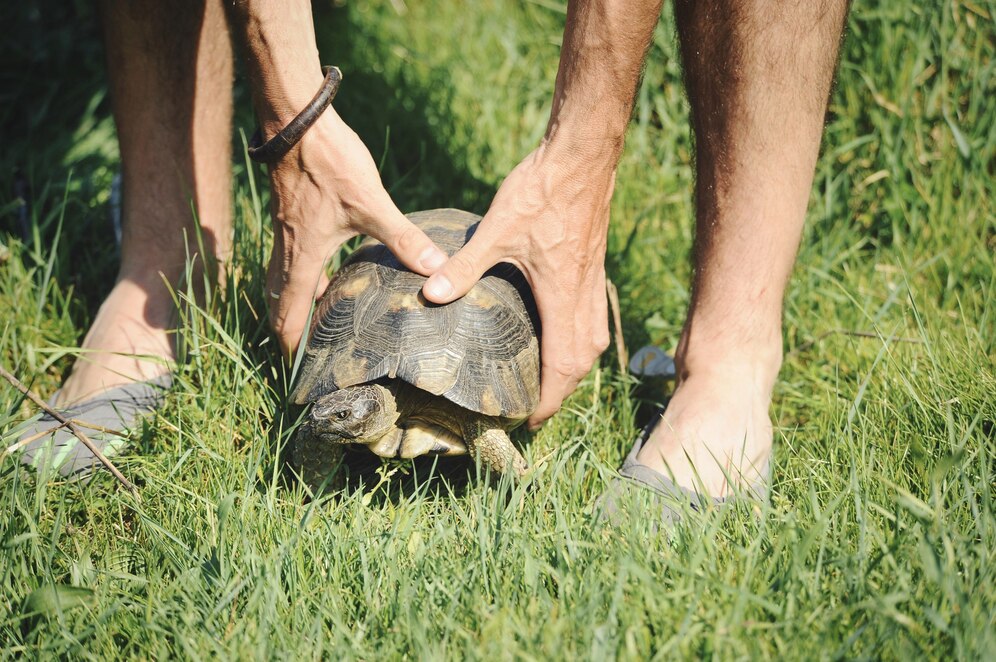
Caring for Pet Turtles: A Beginner’s Guide
And turtles are interesting and low-maintenance pets. With their laid-back personality and peculiar characteristics, these dog breeds appeal to both new and experienced pet owners. But caring for turtles goes beyond admiration. You need to know where they came from to design an appropriate setting for them to thrive.
This article outlines the fundamentals of turtle maintenance — covering the best beginner turtles, core tips, and feeding instructions.
Why Choose Turtles as Pets?

Turtles are captivating animals that bring peace and companionship. Unlike typical pets, their slow movements and distinct looks add to their charm. Many species can live for decades, offering a long-term bond.
Real-Life Applications
Owning a turtle can be educational, especially for families. It teaches children about biology, ecosystems, and responsibility. Watching a turtle can also be a calming activity, helping with stress relief and mindfulness.
Key Benefits of Owning a Pet Turtle
1. Low Maintenance
Turtles are low-maintenance compared to other pets. They don’t need daily walks or grooming. Once you learn their dietary needs, caring for them is straightforward.
2. Longevity and Commitment
Some turtles live beyond 50 years. This long lifespan allows for lasting companionship and the chance to see their growth.
3. Educational Value
Turtles can teach valuable lessons to children. They reveal insights into reptile behaviour, ecology, and habitat conservation.
4. Aesthetic Appeal
Many turtles have bright colours and unique shell patterns. Their aquariums or terrariums can mimic natural habitats, enhancing home décor.
Choosing the Best Pet Turtles for Beginners
When picking a turtle, choose species that suit beginners. These turtles are typically hardy, easy to care for, and adaptable.
1. Red-Eared Slider
- The most popular turtle species among pet owners.
- They are known for the red markings near their ears.
- Need a large tank with both water and dry areas.
2. Painted Turtle
- Smaller than Red-Eared Sliders.
- They are famous for their beautiful shell patterns.
- Easy to care for, requiring a balanced diet and a clean habitat.
3. Box Turtle
- Terrestrial species need a different setup than aquatic turtles.
- They were recognised for their domed shells and colourful patterns.
- A spacious enclosure with hiding spots and a shallow water dish is required.
Essential Turtle Care Tips
To care for your turtle, create a suitable environment for their needs. Here are key tips to help your pet thrive:
1. Habitat Setup
For Aquatic Turtles:
- A large tank with a filtration system.
- Basking area for drying off and getting UVB light.
- Water temperature: 24-28°C, basking area slightly warmer.
For Terrestrial Turtles:
- Spacious enclosure with a diggable substrate.
- Shallow water dish for drinking and soaking.
- Hiding spots for a natural feel.
2. Lighting and Temperature
- UVB lighting is vital for vitamin D3 and shell health.
- Provide a heat source to keep proper temperatures.
3. Diet and Nutrition
- Aquatic Turtles: A mix of commercial pellets, leafy greens, and occasional proteins like insects or small fish.
- Terrestrial Turtles: Mainly vegetables, fruits, and some protein.
4. Regular Health Checks
- Watch for changes in behaviour, shell condition, and appetite.
- Seek veterinary care if you notice any problems.
How to Feed a Pet Turtle
Proper feeding is crucial for your turtle’s well-being. Knowing their dietary needs ensures they get the right nutrients.
1. Feeding Aquatic Turtles
- Diet: Omnivores need both plant and animal matter.
- Staple Foods: Commercial pellets, kale, dandelion greens, carrots.
- Protein Sources: Live or frozen fish, shrimp, and insects (occasionally).
Feeding Schedule:
- Young turtles: Feed daily.
- Adults: Feed every other day.
- Tip: Use a separate container for feeding to avoid tank contamination.
2. Feeding Terrestrial Turtles
- Diet: Primarily plant-based.
- Staple Foods: Collard greens, squash, bell peppers.
- Fruits: Strawberries, apples (occasionally).
- Protein: Earthworms, cooked eggs (occasionally).
Feeding Schedule:
- Feed daily with varied foods.
- Remove leftovers quickly to prevent spoilage.
Additional Expert Tips & Common Mistakes to Avoid

Expert Tips
- Hydration: Ensure fresh water and good quality for aquatic turtles.
- Enrichment: Use varied substrates and plants to encourage natural behaviours.
- Social Interaction: Turtles don’t need socialisation, but gentle handling can strengthen your bond.
Common Mistakes
- Overfeeding: This can lead to obesity and health problems.
- Improper Lighting: Lack of UVB can cause metabolic bone disease.
- Neglecting Cleanliness: Regular cleaning stops harmful bacteria from building up.
Advanced Insights & Expert Recommendations
To enhance your turtle care knowledge, explore advanced topics like breeding, species behaviours, and habitat customisation.
1. Breeding Considerations
- Requires specific knowledge and conditions.
- Consult experts before starting.
2. Habitat Customization
- Mimic natural environments using live plants and varied substrates.
- Water features can improve enrichment.
Be Ready to Welcome Your Pet Turtle!

Taking care of pet turtles is rewarding. With proper care, your turtle can thrive in a healthful environment, and giving it the right turtle will help.
Responsible ownership begins with proper feeding and habitat maintenance. With enough patience and dedication, you can have a lifelong companion in your shelled friend.
If you’re a first-time owner or if you just want to learn more, this guide will help set the stage for how to take care of these extraordinary creatures. Own this slice of turtle life and their unique presence.
Are you ready to welcome a turtle into your life?


